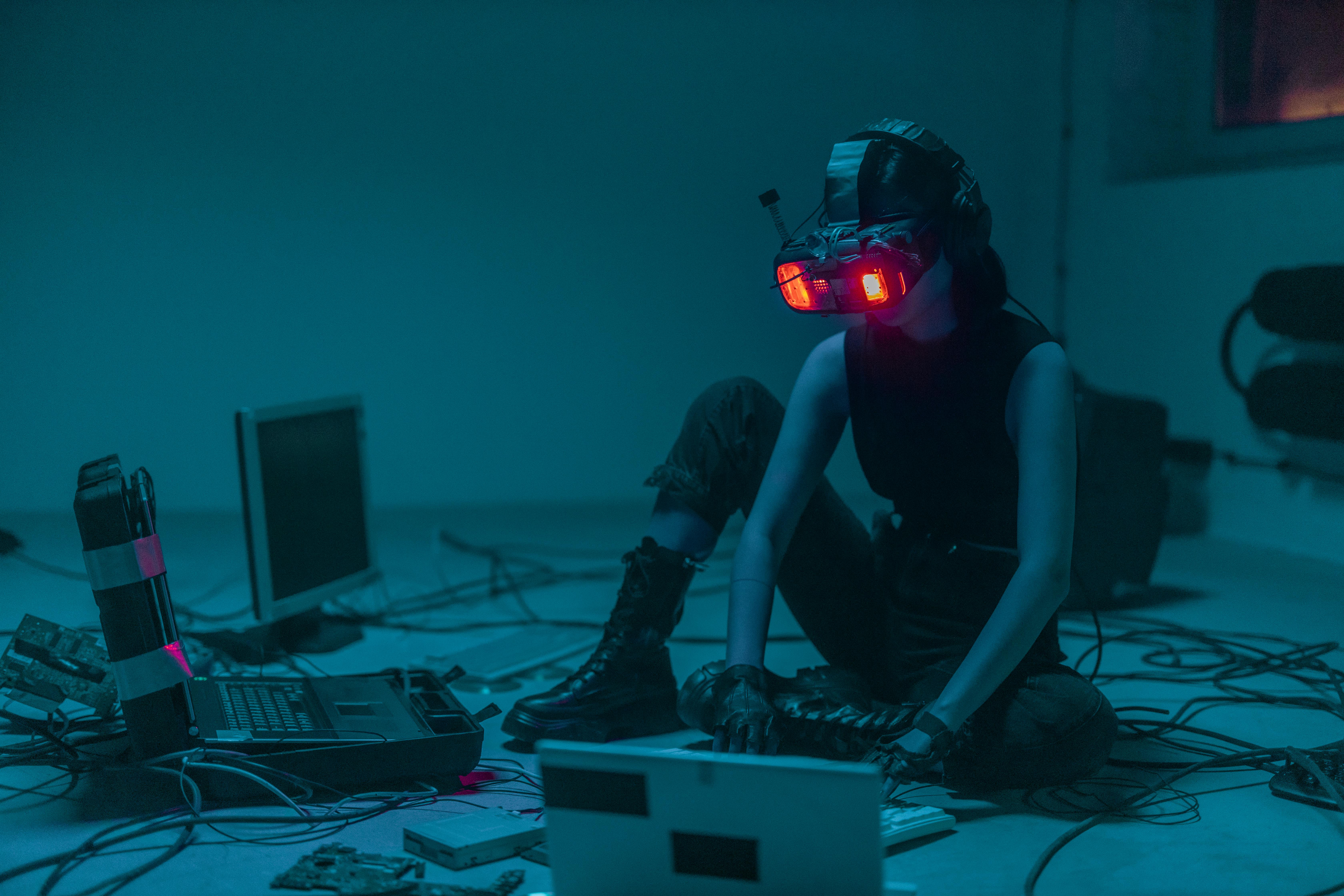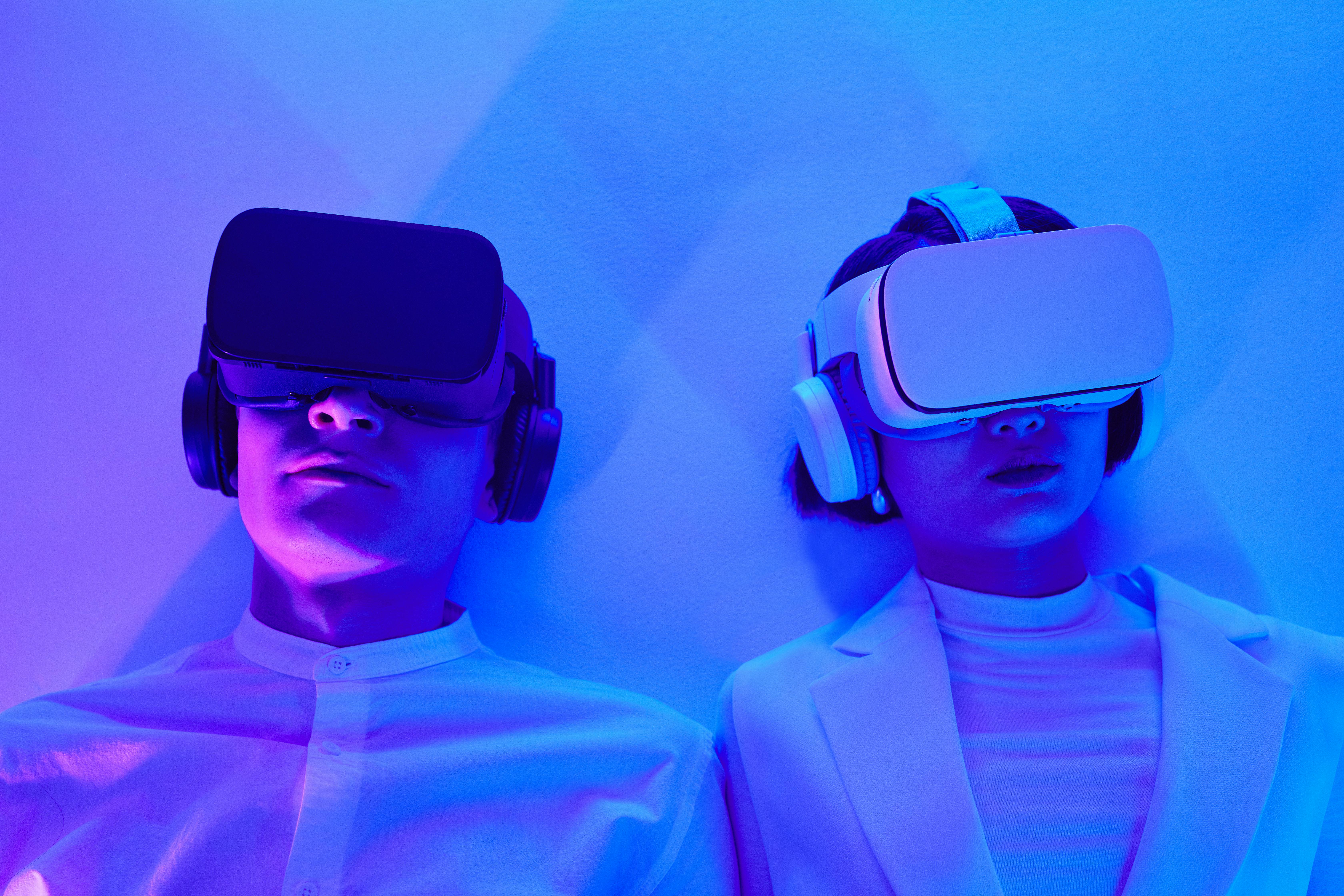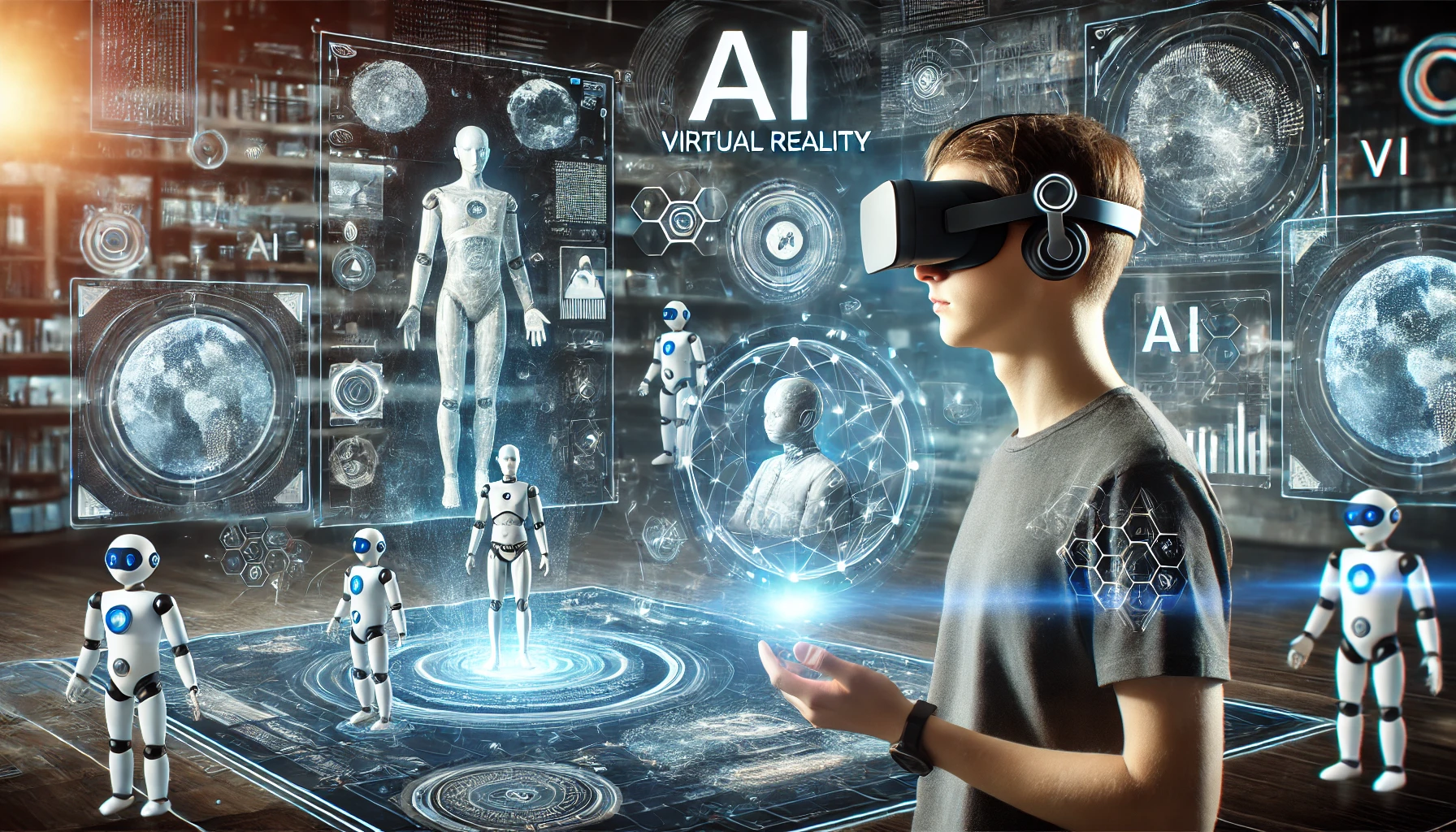Artificial Intelligence (AI) and Virtual Reality (VR) are merging to create more interactive and personalized digital experiences. AI-powered VR systems can adapt environments, improve realism, and enhance user interactions. In this article, we will explore how AI is transforming virtual reality.

1. The Role of AI in Virtual Reality
AI enhances VR by:
- Improving realism with AI-generated environments. Machine learning algorithms can create detailed virtual worlds that look and behave naturally, adjusting lighting, physics, and object behavior in ways that mimic the real world.
- Personalizing experiences based on user behavior. AI analyzes how users interact with virtual environments and adjusts content to match preferences, learning styles, and comfort levels.
- Enhancing VR interactions through AI-powered avatars. Virtual characters driven by AI can respond naturally to users, creating more engaging social experiences within virtual worlds.
The integration of AI into virtual reality represents a significant leap forward from early VR systems, which offered impressive visuals but limited interactivity. Modern AI-enhanced VR can understand user intent, adapt to individual needs, and create dynamic experiences that change based on user behavior.
Key Development: Recent advances in deep learning have enabled VR systems to generate photorealistic environments on-demand. The latest neural rendering techniques can create virtual spaces that are nearly indistinguishable from reality, with AI handling complex details like accurate shadows, reflections, and natural movement of objects.
2. Best AI-Enhanced VR Applications
A. AI in Gaming and Entertainment
Meta Horizon Worlds: AI-driven virtual environments for social interaction. This platform uses artificial intelligence to create responsive social spaces where users can interact with both human-controlled avatars and AI entities. The system learns from social interactions to make AI characters more realistic and engaging over time.
Unity AI Toolkit: Uses AI to generate realistic VR game experiences. This development framework allows game creators to implement sophisticated AI behaviors without extensive coding. The toolkit can automatically generate terrain, populate environments with interactive elements, and create non-player characters that exhibit convincing behaviors.
“The integration of AI into VR gaming has fundamentally changed how we design interactive experiences. Instead of manually scripting every possible interaction, we can now define high-level behaviors and let AI handle the details. This creates more natural, unpredictable gameplay that responds uniquely to each player’s actions.”
— Maria Chen, Lead VR Designer at Immersive Studios

B. AI in Virtual Training and Education
Google VR Expeditions: AI-enhanced virtual field trips for students. This educational platform uses artificial intelligence to create immersive learning experiences that adapt to student engagement levels. The system can highlight details that capture student interest, provide additional information on topics that generate questions, and adjust the complexity of content based on comprehension.
Strivr AI Training: Uses AI and VR for corporate training simulations. This platform employs machine learning to create realistic workplace scenarios for employee training. The AI analyzes trainee decisions and actions, providing personalized feedback and adjusting scenarios to target specific skill development needs.
Education technology researcher Dr. James Rodriguez explains: “AI-enhanced VR training provides the benefits of hands-on experience without the risks or costs of real-world training. The AI component is crucial because it allows the system to identify knowledge gaps and misconceptions in real-time, then modify the virtual experience to address these specific learning needs.”
C. AI in Healthcare and Therapy
Psious AI VR Therapy: Uses AI-powered VR for mental health treatment. This therapeutic system uses artificial intelligence to create personalized exposure therapy experiences for patients with anxiety disorders, phobias, and PTSD. The AI monitors physiological responses like heart rate and skin conductance to assess stress levels and adjust the intensity of virtual scenarios accordingly.
VRPhysio: AI-driven rehabilitation exercises in a virtual environment. This platform creates engaging physical therapy experiences that adapt to patient progress and limitations. The AI uses computer vision to analyze patient movements, providing real-time feedback and adjusting exercise difficulty to optimize rehabilitation outcomes.
Clinical Insight: A 2024 study published in the Journal of Virtual Rehabilitation found that AI-enhanced VR therapy for stroke patients improved motor function recovery by 37% compared to traditional physical therapy alone. The AI’s ability to precisely track movement and provide immediate feedback was identified as the primary factor in these improved outcomes.
3. AI and Personalized Virtual Worlds
The combination of artificial intelligence and virtual reality is enabling unprecedented levels of personalization in virtual environments:
- AI-powered VR assistants guide users through virtual experiences. These intelligent guides can understand natural language questions, demonstrate interactions, and provide contextual information tailored to user interests and knowledge levels.
- AI-driven facial recognition adapts VR avatars in real-time. Advanced computer vision systems can track facial expressions and replicate them on virtual avatars, enabling more nuanced emotional communication in virtual spaces.
- AI-enhanced natural language processing (NLP) enables realistic VR conversations. Sophisticated language models allow users to have natural, unscripted conversations with virtual characters that can remember previous interactions and respond contextually.

VR experience designer Sophia Martinez notes: “The most compelling aspect of AI-enhanced virtual reality is how it can shape itself around individual users. Two people might enter the same virtual world but have completely different experiences based on their preferences, behaviors, and needs. The AI observes how users interact with the environment and continuously refines the experience to maximize engagement and effectiveness.”
4. The Future of AI in Virtual Reality
As artificial intelligence and virtual reality technologies continue to evolve, several transformative developments are on the horizon:
- AI-powered VR education platforms for immersive learning. Future educational VR will feature AI tutors that understand student learning styles, identify knowledge gaps, and create personalized lessons that adapt in real-time to optimize comprehension and retention.
- AI-driven VR social networking for lifelike digital interactions. Next-generation social VR platforms will use AI to facilitate more natural social dynamics, with intelligent systems that can translate languages in real-time, suggest relevant conversation topics, and even help mediate conflicts.
- Smarter AI-generated environments that react to users in real-time. Future VR worlds will be increasingly dynamic, with AI systems that can generate entire cities, ecosystems, or historical settings on-demand, complete with interactive elements and narrative structures that respond to user actions.
“The convergence of AI and VR represents a fundamental shift in human-computer interaction. We’re moving beyond interfaces that require users to learn specific commands or techniques toward systems that understand human intention and adapt accordingly. The computer is finally learning to speak our language rather than forcing us to speak its language.”
— Dr. Carlos Santos, Director of Immersive Computing Research
Emerging Research: Computer scientists at MIT are developing “neural rendering engines” that can generate photorealistic VR environments 50 times faster than current technology, while using 75% less computing power. These AI-powered systems could make high-quality VR experiences accessible on mobile devices rather than requiring specialized hardware.
Conclusion
AI is revolutionizing virtual reality by making experiences more interactive, intelligent, and immersive. Whether for gaming, education, or therapy, AI-powered VR is shaping the future of digital interactions.
The integration of artificial intelligence into virtual reality represents more than just a technical advancement—it’s a fundamental reimagining of how humans interact with digital environments. By making virtual worlds more responsive, personalized, and intuitive, AI-enhanced VR is bringing us closer to truly seamless digital experiences that can educate, heal, entertain, and connect us in ways previously limited to science fiction.
Start exploring AI-enhanced virtual reality today for a next-level experience!
References and Further Reading
- Meta Research. (2024). Social Interaction in AI-Enhanced Virtual Environments. Meta Reality Labs Technical Report 2024-05.
- Chen, M., & Williams, J. (2024). Procedural Content Generation Using Reinforcement Learning for VR Gaming Environments. IEEE Transactions on Visualization and Computer Graphics, 30(4), 1782-1796.
- Google Education. (2024). Adaptive Learning in Virtual Reality: The Expeditions Platform. Google Education Research Publications.
- Rodriguez, J., & Smith, T. (2024). AI-Enhanced Virtual Reality Training: Efficacy and Implementation Strategies. Journal of Educational Technology, 45(2), 217-235.
- Journal of Virtual Rehabilitation. (2024). Comparative Study of AI-Assisted VR Therapy versus Traditional Rehabilitation Methods. Volume 12, Issue 3, 156-178.
- Martinez, S., & Lee, K. (2023). Personalization Algorithms for Virtual Reality User Experience. International Journal of Human-Computer Interaction, 39(3), 412-430.
- Santos, C., & Johnson, A. (2024). The Future of Human-Computer Interaction: AI-Mediated Reality. ACM Transactions on Interactive Intelligent Systems, 14(1), 23-47.
- Massachusetts Institute of Technology. (2025). Efficient Neural Rendering for Mobile VR Applications. MIT Computer Science and Artificial Intelligence Laboratory Technical Report.

